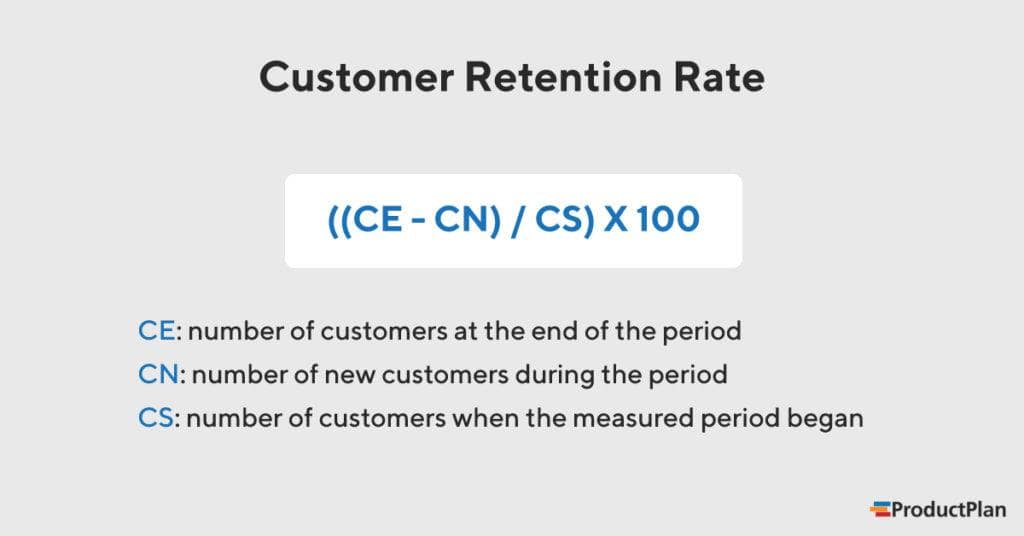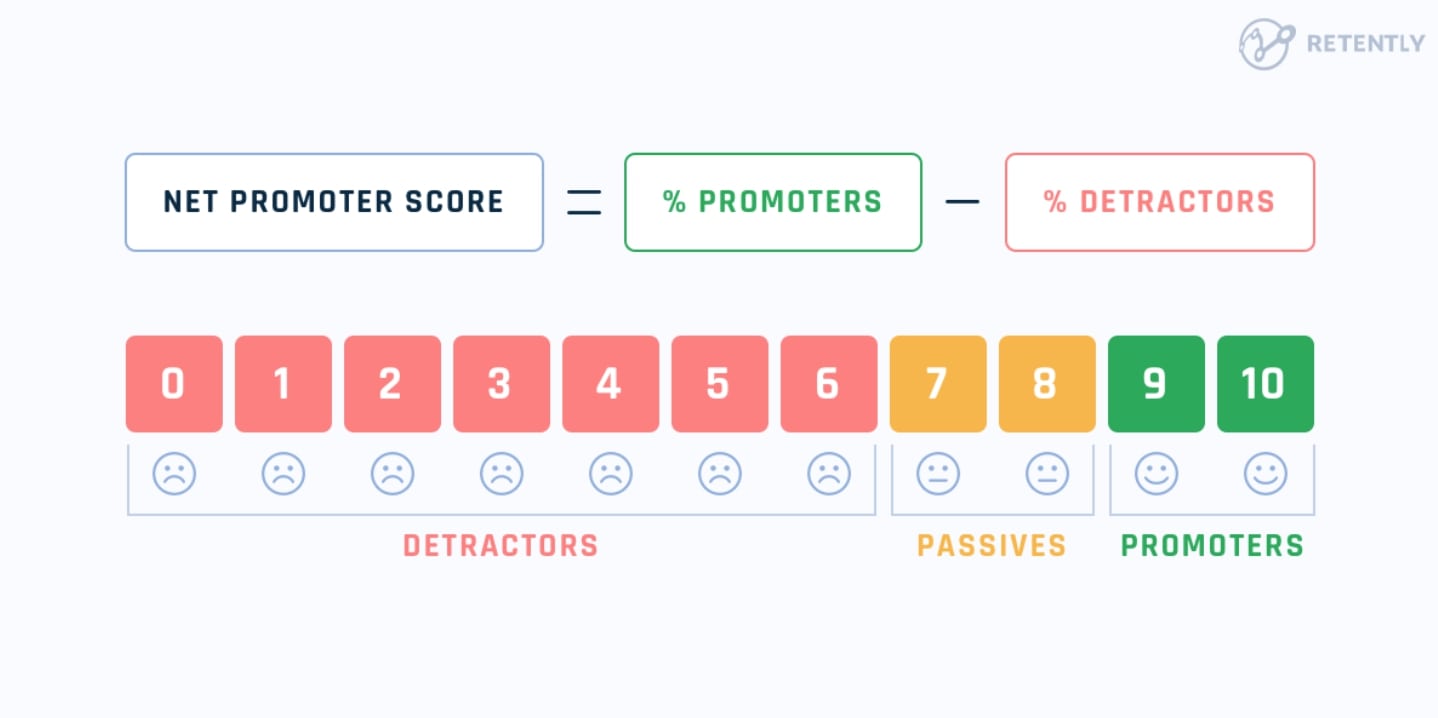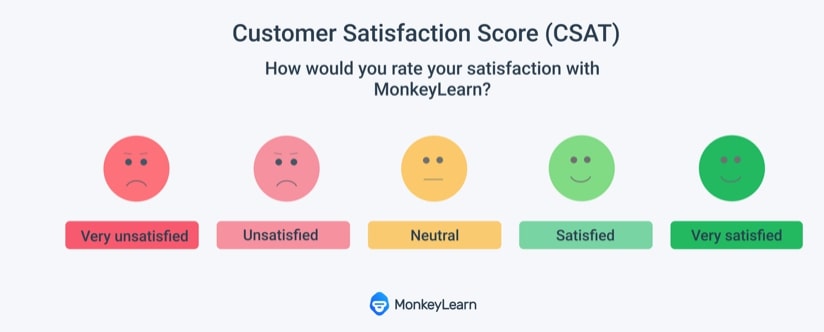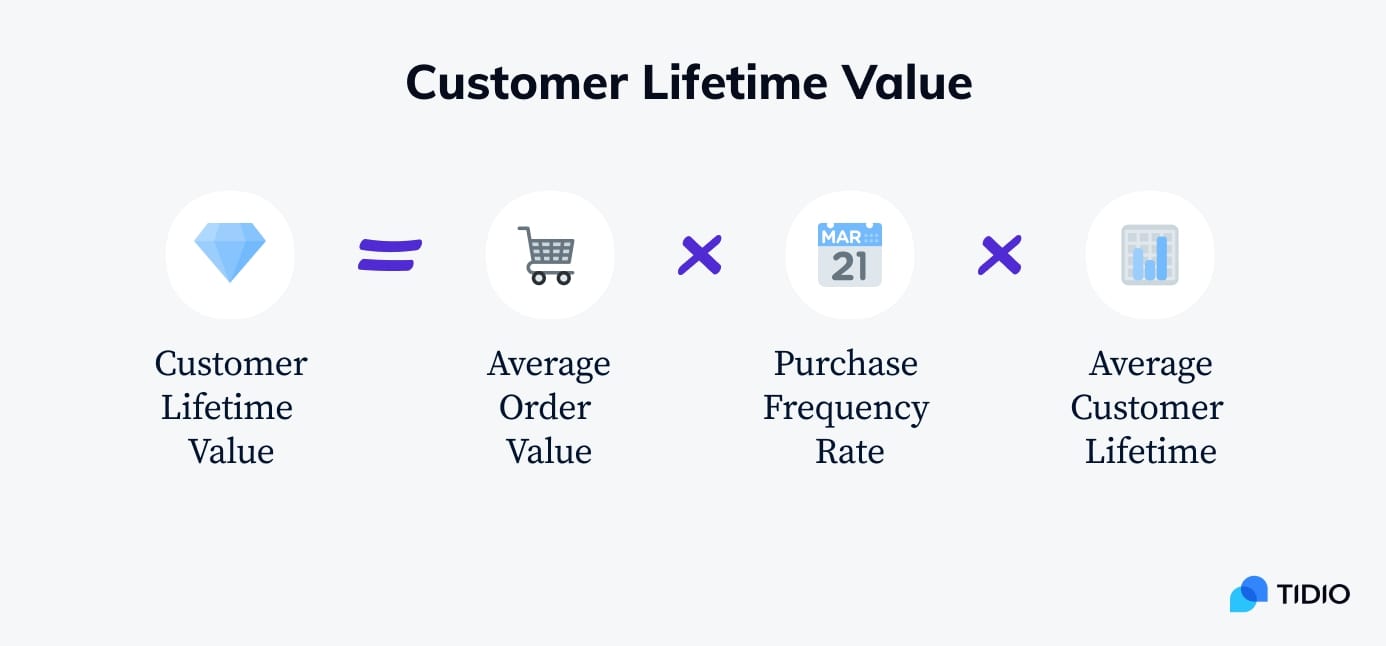Customer engagement is more than just some extravagant term for brands to use in marketing campaigns. Although customer engagement cannot be expressed in numbers, it is directly associated with individual metrics that could reveal how customers feel about your business.
So how can you measure and improve customer engagement? In this article, we will walk you through the process and share tried-and-tested tips on boosting customer experience.
Table of Contents:
- What is Customer Engagement?
- How Do Customer Engagement Metrics Help?
- Most Important Customer Engagement Metrics to Track in 2023
- How to Increase Customer Engagement
What is Customer Engagement?
Customer engagement is the interaction and involvement of customers with a brand. It’s about creating positive experiences at every touchpoint, meeting customer expectations, and building long-term relationships.
Businesses can foster loyalty and advocacy by actively listening, collecting feedback, and tailoring interactions. It goes beyond transactions and includes ongoing communication efforts like loyalty programs and personalized campaigns. In essence, customer engagement is about connecting and nurturing relationships with customers.
You must be thinking — customer engagement is such a vast term — many strategies and tactics can directly impact it. So how can you quantify it to measure your success and what tactics can you implement? Let’s explore.
How Do Customer Engagement Metrics Help?
Customer engagement metrics serve as windows into the hearts and minds of customers, unveiling stories of satisfaction, loyalty, and advocacy. By delving into these metrics, businesses can uncover insights to enhance their offerings and create more meaningful experiences. These metrics show the effectiveness of marketing endeavors, the impact of product enhancements, and the quality of customer service.
With this knowledge, businesses can steer their strategies toward building stronger connections and fostering lasting customer loyalty. Customer engagement metrics are key to unlocking the door to a world of enhanced customer experiences. Now, the following question arises: Which customer engagement metrics are crucial?
Most Important Customer Engagement Metrics to Track in 2024
the most important customer engagement metrics that every organization should track. From traditional indicators such as customer satisfaction and retention rates to more advanced measurements like net promoter score (NPS), we will delve into the significance of each metric, how to interpret them, and how they can collectively contribute to enhancing customer experience and driving business growth
1. Churn Rate
Customer churn rate is the percentage of customers who stop doing business with you. Tracking churn rate on its own doesn’t reveal the specific reasons why individual customers part ways with your brand. But look — it can still tell you something is not working right.
While no businesses can prevent churn in the future, you can still take measures to limit it. Aim to level your churn rate to the industry’s average or below. Also, remember that higher churn rates signal unhappy customers. Luckily, there’s so much you can do to turn people’s negative experiences into positive ones.
2. Retention

Retention rate helps you understand how well you are at keeping existing customers. You can think of retention as the exact opposite of churn. If you had 100 customers at the beginning of 2022 and 20 churned by the end of the year, the yearly retention rate was 80%. You can also track these two metrics on a monthly or quarterly basis. In fast-paced markets like e-commerce, monthly churn and retention rates can shed light upon:
- How seasonal campaigns perform: By analyzing churn and retention rates during specific seasons, you can determine the effectiveness of your marketing campaigns and make adjustments accordingly.
- How well strategy shifts resonate with customers: If you introduce changes in your product or service offerings, tracking churn and retention rates can indicate how customers respond to these changes.
- How poorly a service failure is reflected in customers’ overall experience: During challenging times or unexpected disruptions, monitoring churn and retention rates can provide insights into the impact on customer satisfaction and loyalty.
3. Net Promoter Score (NPS)

NPS measures customers’ likelihood to recommend a company to others.
It is calculated based on a survey asking customers to rate their likelihood on a scale of 0 to 10. NPS categorizes customers as promoters, passives, or detractors.
Monitoring NPS helps gauge customer satisfaction and loyalty, allowing businesses to identify areas for improvement. A higher NPS indicates a higher likelihood of customer advocacy and positive word-of-mouth referrals.
4. Customer Satisfaction Score (CSAT)

CSAT measures customers’ satisfaction with a specific interaction or experience. It is usually assessed through surveys asking customers to rate their satisfaction level. CSAT helps identify pain points and areas where improvements are needed to enhance customer experience. By regularly measuring CSAT, you can identify trends and make data-driven decisions to address customer concerns and improve overall satisfaction levels.
5. Customer Effort Score (CES)

CES measures the ease of customers’ interactions with a company. It focuses on minimizing customer effort to achieve their goals. By tracking CES, businesses can identify areas where they can simplify processes, streamline interactions, and make it easier for customers to achieve their desired outcomes. Reducing customer effort can lead to increased satisfaction, loyalty, and engagement.
6. Customer Lifetime Value (CLV)

CLV measures the total value a customer brings to your business over their lifetime as a customer. It considers factors such as customer purchase frequency, average order value, and retention.
By tracking CLV, you can identify their most valuable customers and tailor their strategies to maximize long-term customer value. This metric helps prioritize efforts to engage and retain high-value customers while identifying opportunities to increase customer lifetime value for other segments.
How to Increase Customer Engagement: 8 Practical Strategies
In the ever-evolving business landscape, the ability to capture and maintain customers’ attention is paramount for building brand loyalty, nurturing lasting relationships, and propelling business growth.
This guide delves into eight practical and time-tested strategies that businesses can adopt to enhance customer engagement. By implementing these approaches, organizations can cultivate a devoted customer base, establish a competitive advantage in the market, and leave a lasting impact on their audience.
1. Invest in Website Performance
Reliable dedicated hosting ensures that your website loads quickly and operates smoothly. Slow-loading or unreliable websites can frustrate visitors and lead to a poor user experience. Just think about it — wouldn’t another performance bug annoy you when you want to buy something online? That’s why choosing dedicated hosting is essential to ensure the website has a high uptime.
Apart from uptime, there are a few other goals dedicated hosting can help achieve:
- fast website loading speed
- consistent uptime
- handling increased traffic
- optimal performance across various device types
2. Answer All Frequent Questions
FAQs on a website significantly contribute to customer engagement by providing quick and convenient access to information. You must ask why it matters if customers can just drop you a message with a question through a contact form. That’s because FAQs save customers time and effort, making engaging with your brand easier. This builds trust and reliability — customers perceive you as proactive and knowledgeable.
Check out how CloudZero covers customers’ frequently asked questions in their FAQ section on the website. They divide the inquiries based on the topics involved.

3. Show results and testimonials
Results and testimonials are powerful tools for driving higher customer engagement. They build trust and credibility by showcasing tangible outcomes from previous customers and providing social proof.
Demonstrating real-world applications and highlighting success stories make your offerings more relevant and persuasive, influencing purchase decisions. Testimonials create emotional connections and relatability, fostering engagement.
A collection of positive testimonials enhances brand perception, strengthening customer trust. By leveraging results and testimonials, you can effectively engage customers, inspire confidence, and drive meaningful interactions with your brand.
You can get inspired by this example of personal trainer Chris Protein, who is bringing up his previous successes with clients to build trust and overcome the objections of new customers.

4. Ensure Data Security
Data security is crucial for establishing trust with your customers. When customers know their personal information and data are protected, they feel more comfortable navigating your website and providing their information at checkout.
You can follow this checklist to find out if your website complies with the most important data security measures:
1. SSL/TLS Encryption — ensure your website is secured with an SSL/TLS certificate, which encrypts data transmitted between your website and users. Check if your website URL starts with “https://” and displays a padlock icon in the browser address bar.
2. Strong Password Policies — implement vital password requirements for user accounts on your website. Encourage users to create unique, complex passwords and consider enforcing password expiration and multi-factor authentication.
3. Regular Software Updates: Keep your website’s content management system (CMS), plugins, themes, and other software current. Regularly check for updates and apply them promptly to patch any security vulnerabilities.
4. Secure Forms and Data Collection: Ensure that any forms or data collection points on your website, such as contact forms or payment gateways, are secured and follow industry best practices. “This is especially important because many forms contain sensitive information, such as credit card numbers and addresses,” says Zachary Jarvinen, Vice President of Exact Payments. Use encryption for transmitting sensitive data, and implement CAPTCHA or reCAPTCHA to prevent spam.
5. Firewall and Intrusion Detection Systems: Implement a firewall and intrusion detection systems (IDS) to monitor and block unauthorized access attempts to your website.
6. Regular Backups: Perform regular backups of your website’s data and files. Store the backups securely, preferably in an off-site or cloud storage service. Regular backups ensure you can recover your website and data in case of a security incident or data loss.
5. Use chatbots
Chatbots are an effective tool for enhancing customer engagement. They respond instantly to customer inquiries, guiding them through their journey and addressing their needs. Now you might be wondering: why not have a customer support department handling those? Well, chatbots are a way to automate a response to repetitive and straightforward questions that flood your support’s inbox daily.
By offering personalized recommendations, answering frequently asked questions and assisting with transactions, chatbots create a seamless and interactive experience that drives engagement and customer satisfaction.
Here is where you can start with chatbot implementation. Draft a logic for which your chatbot should work to branch questions correctly and provide faster answers. Think of the capabilities and features your chatbot should fulfill, go through the list of chatbot providers, and pick the one checking all boxes.
6. Conduct customer surveys
Customer surveys help you gather valuable feedback and insights directly from your target audience. By asking specific questions about their preferences, experiences and pain points, you better understand their needs and expectations. This data allows you to tailor your products, services, and marketing efforts to meet their requirements better, increasing engagement through a customer-centric approach.
Follow the steps to introduce your first survey or improve on the existing ones:
- Determine the target audience for the survey
- Design clear and concise survey questions
- Choose the right survey distribution method (email, website, social media, etc.)
- Set a reasonable timeline for survey completion
- Promote the survey to maximize participation
- Collect and analyze survey responses
- Identify key insights and patterns from the data
- Use the survey findings to inform decision-making
- Implement changes and improvements based on customer feedback
- Communicate survey results and actions taken to participants
- Repeat the survey periodically to track changes and measure progress
7. Introduce loyalty programs
Loyalty programs incentivize customers to engage more frequently and actively with your brand. By offering exclusive rewards, discounts, or special privileges, you encourage repeat purchases and foster a sense of loyalty. “These programs increase engagement and provide opportunities to collect customer data and personalize experiences, further enhancing their connection with your brand,” says Brian Lim, CEO of iHeartRaves & INTO THE AM.
8. Omnichannel customer engagement
An omnichannel approach ensures consistent and seamless customer experiences across multiple channels and touchpoints. By integrating your website, social media, mobile apps, physical stores, and other channels, you allow customers to engage with your brand through their preferred means. This cohesive experience, where customers can easily switch channels, deepens their engagement and strengthens their connection with your brand.
Wrapping up
Customer engagement is not just a buzzword but a vital aspect of building successful and long-lasting customer relationships. By understanding and measuring customer engagement metrics, businesses can gain valuable insights into customer satisfaction, loyalty, and advocacy. These metrics provide a window into customers’ sentiments, guiding businesses to make data-driven decisions to improve their offerings and create positive experiences at every touchpoint.
To effectively measure and improve customer engagement, you should track essential metrics such as churn rate and retention.
Implementing effective strategies to increase customer engagement is crucial. Investing in website performance, offering personalized experiences, leveraging social media, and focusing on proactive customer support are just a few proven tactics. By prioritizing these strategies and continuously listening to customer feedback, businesses can foster loyalty and advocacy and, ultimately, achieve a healthy level of customer engagement.






